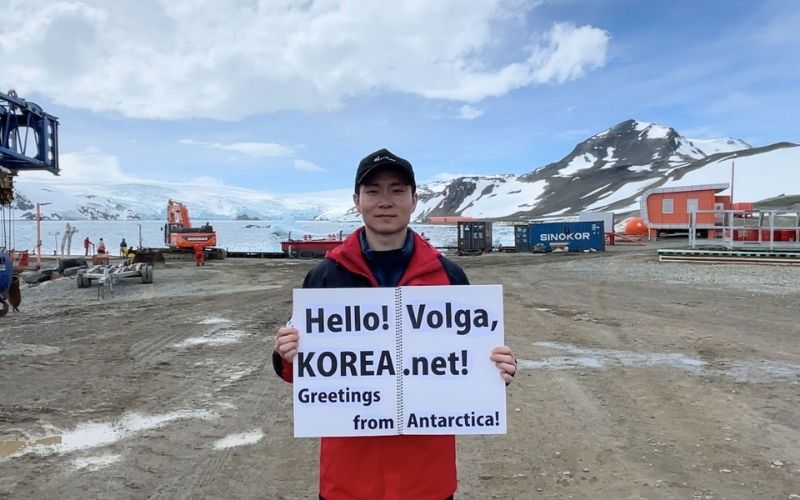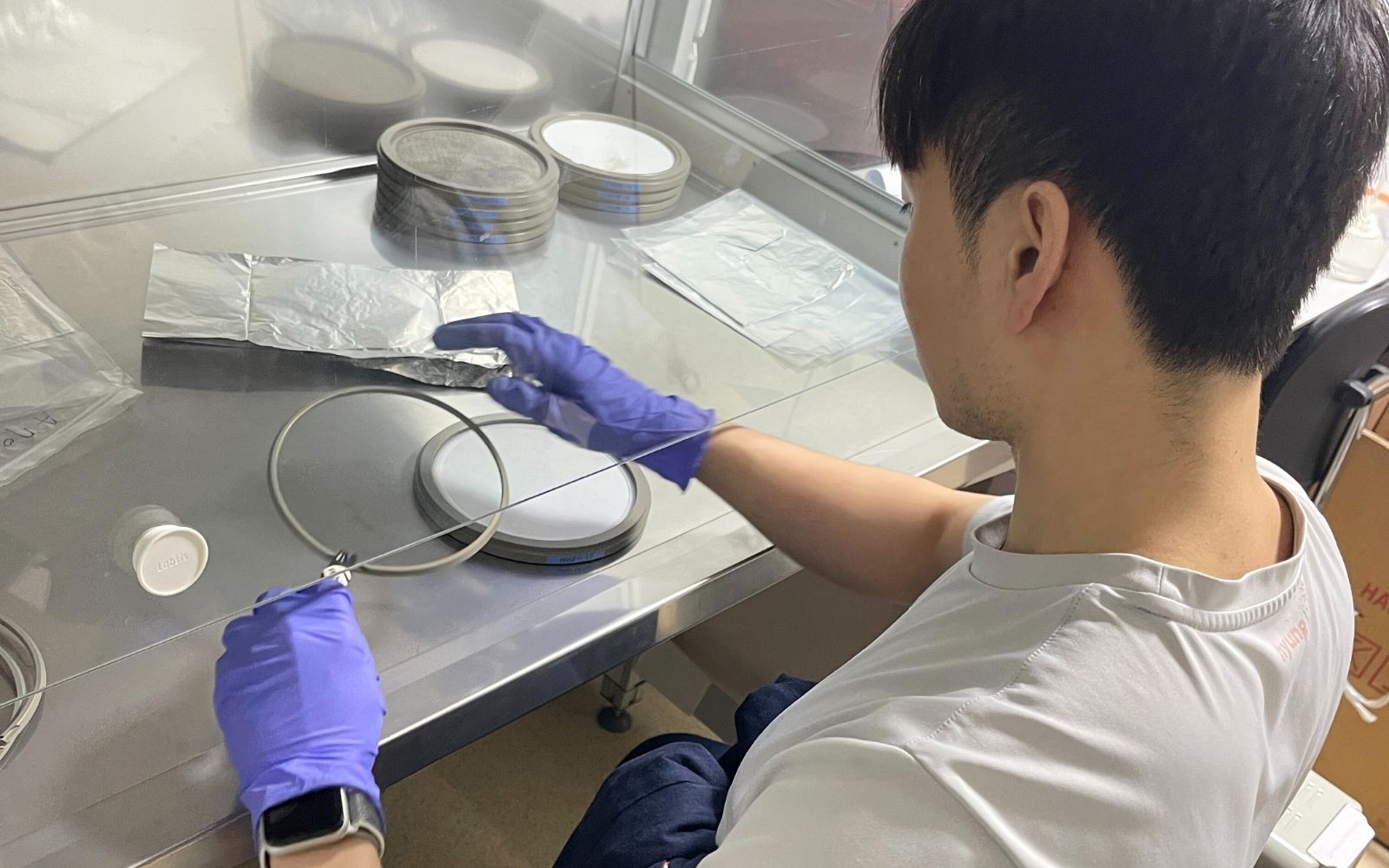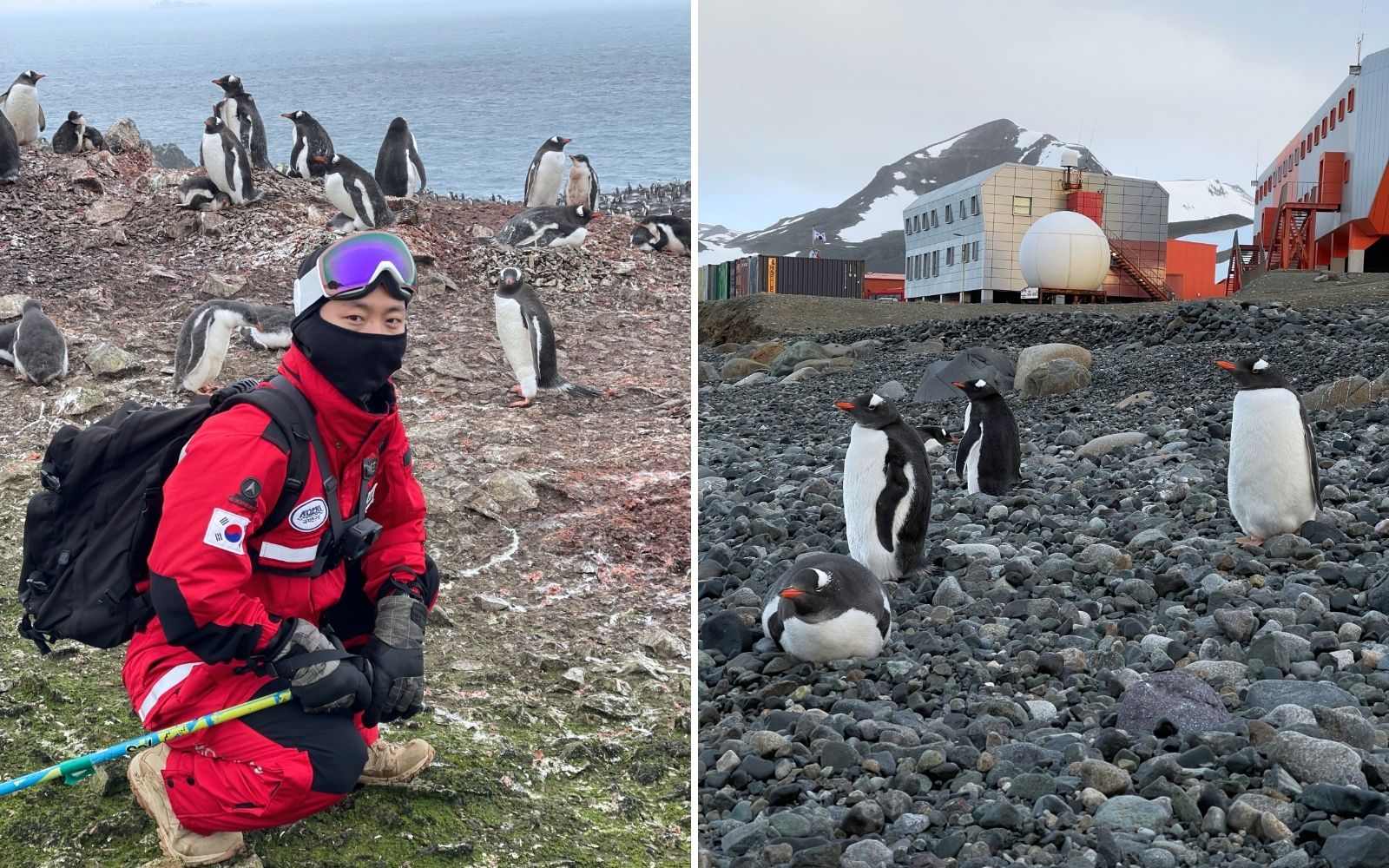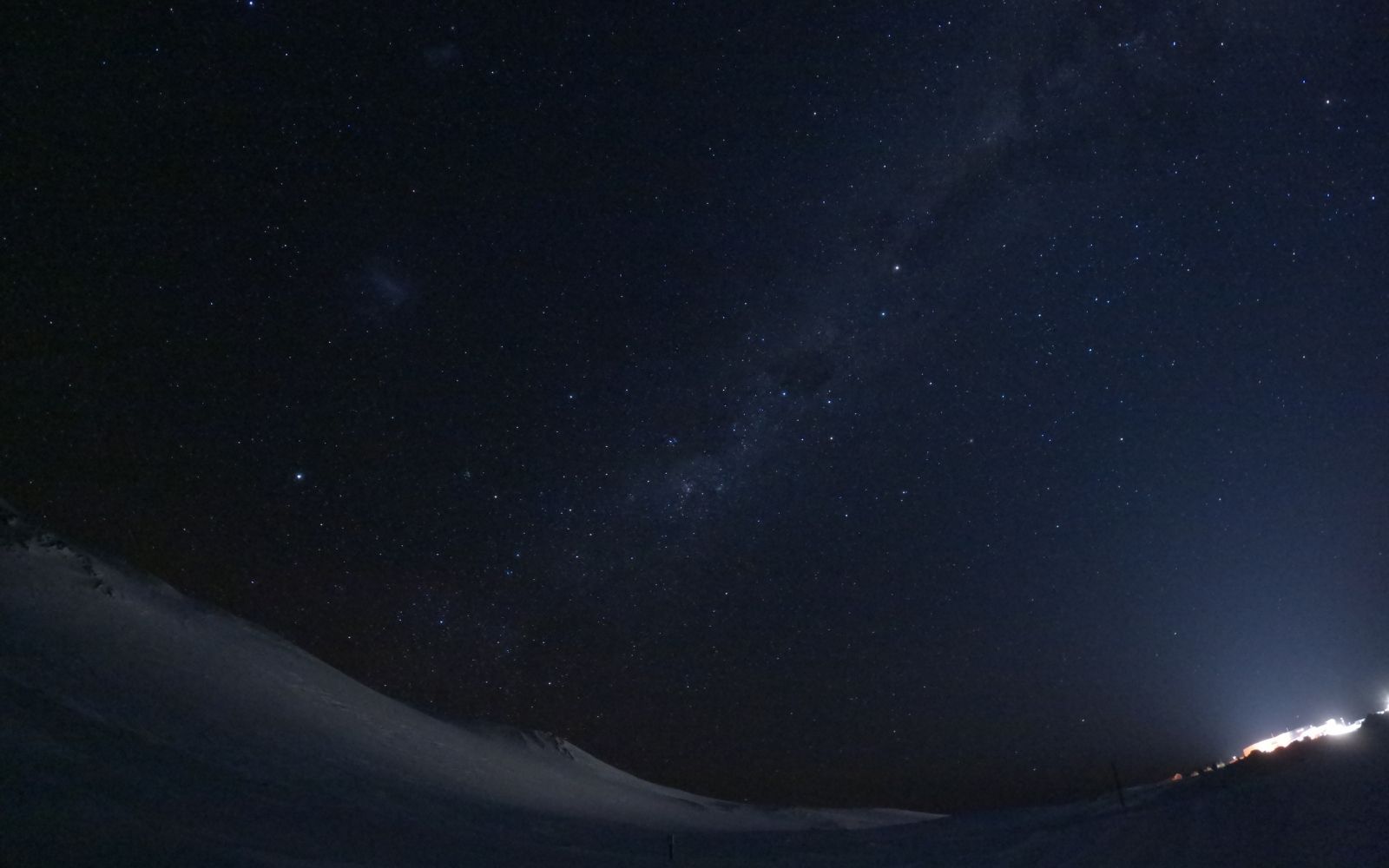- 한국어
- English
- 日本語
- 中文
- العربية
- Español
- Français
- Deutsch
- Pусский
- Tiếng Việt
- Indonesian
By Honorary Reporter Volga Serin Suleymanoglu from Turkey
Photos = Kim Chang-eun
Having lived at the King Sejong Station in Antarctica, atmospheric scientist and amateur filmmaker Kim Chang-eun in an interview shared insights on research projects in this extreme environment as well as his short thriller "Melting Monster" (2023).
The film is about the melting of a permafrost and subsequent release of a virus from the subsoil, earning two awards at the Winter International Film Festival of Antarctica (WIFFA) last year Sep. 15.
The following are excerpts from a written interview with Kim between Dec. 7 last year and Jan. 9.

Scientist Kim Chang-eun holds up a greeting card from Antarctica for Korea.net readers.
Briefly introduce yourself.
Since I was little, I've been interested in science and environmental issues such as global warming. To study these topics, I earned a bachelor's in atmospheric science from Pusan National University and a master's from Pohang University of Science and Technology. I had no past experience in art, so I was thrilled that the first film I made won an award.
Why did you decide to work as an atmospheric scientist in Antarctica?
Antarctica is the region with the most extreme climate change that will affect tropical and mid-latitude regions, with research crucial to prepare for this. But studying Antarctica is difficult because of challenging working conditions, isolation, darkness and cold. I wanted to contribute to such research despite such difficulties, and had curiosity and admiration of the unknown.

Atmospheric scientist Kim Chang-eun works at the King Sejong Station in Antarctica.
What kind of research is done at the King Sejong Station?
The station has scientists in six fields: atmosphere, meteorology, oceanography, biology, upper atmosphere and geology. As an atmospheric scientist, I mainly collected aerosol, microgas and weather data with the meteorologist, who handles weather forecasting. The oceanographer usually studies seawater temperature and marine life; the biologist organisms in Antarctica as a whole and microplastics on bases; the upper atmospheric scientist what happens at the top of the atmosphere; and the geologist earthquakes and measurement.
How was the extreme cold in Antarctica?
Winds are very strong in Antarctica. It often gets so windy that it's hard to walk. On a blizzard day, snow comes in through tiny gaps and eventually fills up in the room even with the windows closed. I was more scared of the wind than low temperatures.

Researcher Kim Chang-eun poses with penguins at a penguin colony and those at King Sejong Station.
Why did you make your short film "Melting Monster" (2023), which won Best Cinematography and Best Actor at last year's WIFFA?
I joined WIFFA to make unique and meaningful memories while in Antarctica. My movie is about an unknown virus released from the region's permafrost due to extreme climate change and the resulting infection of a scientist at the King Sejong Station. I wanted to make a movie that gave both joy and a meaningful message to the audience.How did you come up with the idea for your work?
One winter night, an idea crossed my mind and I spent all night writing the script and making plans. I started shooting it the next day and turned my monotonous routine upside down. I had no obstacles to come up with the script. I easily got costumes and masks and where to shoot it.
The cast suffered minimal burden because of no dialogue. They acted spontaneously at the request of the director and filming didn't take long because of their enthusiasm.

This is a behind-the-scenes moment from the short film "Melting Monster" (2023).
Do you plan to continue making films?
As a scientist, I won't get to film often. But as YouTube and reels are popular, I plan to make a lot of short videos on various stories. I also wish to participate in WIFFA again and show my abilities.
Would you return to Antarctica?
Of course. Korea has two stations there: the King Sejong and Jang Bogo stations. Since I've been to the former, I want to visit the latter next time for a completely different experience as the two bases are in different locations.

The King Sejong Station is shown on the right against the backdrop of the night sky in Antarctica.
jihlee08@korea.kr
*This article is written by a Korea.net Honorary Reporter. Our group of Honorary Reporters are from all around the world, and they share with Korea.net their love and passion for all things Korean.